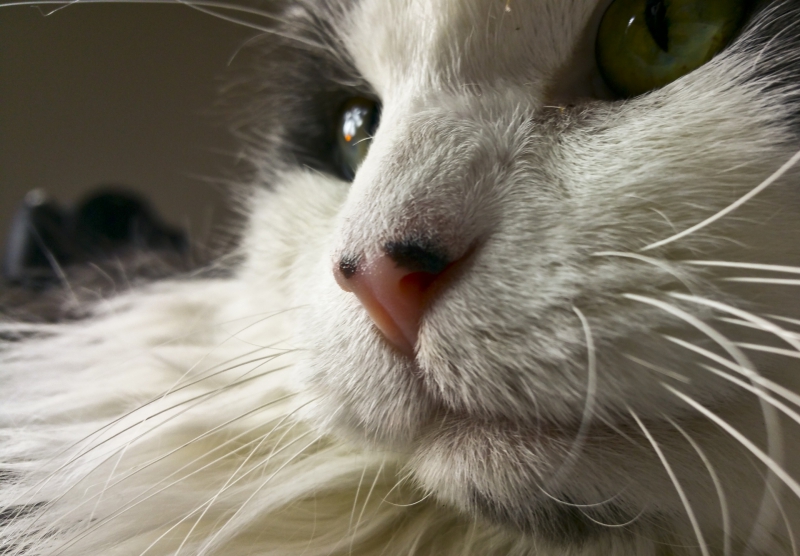 |
| ▲ cat's beard (source = public domain pictures) |
A cat's beard is different from a beard that can be cut at any time. It functions more than aesthetic elements. Let's look at the role of the cat's beard.
 |
| ▲ cat's beard (source = Pixar Bay) |
Cat's whiskers have more functions than you think
Cat whiskers with thick hairs are called "vibrissae" at the mouth of the animal as a scientific name. This beard is a very sensitive area, and the cat senses its direction through it. It is also used for decoration and insulation purposes and is also used to protect oneself.
When a beard touches an object, the vibrations of the beard tip are transmitted to the hair follicles and the nervous system, allowing the cat to sense the size, location and texture of the surrounding environment and objects.
According to Dr. Neal Marin, veterinary doctor, cat whiskers have amazing detection ability. The beard acts like an antenna in the face and can transmit sensory signals to the cat's brain and nervous system. It also gives you important information, such as your current direction and environment. More specifically, cats can use beards to hunt for food, roam in the dark, detect wind changes, and determine whether they are inanimate or living animals. It also helps to protect themselves and find food, especially from large predators.
Since the beard is very sensitive and cognitive, it may cause a problem called 'Whisker Fatigue'. Until now, these symptoms have not been treated 100%, but many researchers and owners are accepting it as an obvious symptom.
What is beard fatigue?
Beard fatigue is a symptom that cats can not filter out unnecessary stimuli from beards. One day when too much of a cat's beard gets in contact, the senses become overloaded. One of the activities that a cat can do several times a day is to eat food or drink water in a bowl of rice. Under the overload condition, this activity is stressed and misinterpreted as a disruption to the daily routine. As a result, eating and drinking activities are interrupted and harmful to health.
Cat owners are often suspicious of beard fatigue when they do not feed their cat's favorite food. In fact, even when the cats are in perfect health, they can also develop beard fatigue.
One way to prevent cat's beard fatigue is to prepare a large rice bowl. Whenever a cat eats its food, it may be stressed if its beard touches it. The New York Times recommends round bowls for cats suffering from beard fatigue.
Beard fatigue should not be considered light because it is a real problem with cats. If not treated right away, it can lead to starvation and eventually lead to related diseases.
 |
| ▲ A man sleeping next to a cat (source = Wikimedia Commons) |
Treatment of beard fatigue
Beard fatigue is treatable. Unlike other diseases, beard fatigue does not have any special treatment. It can be solved by simple act.
There are rice bowls and feeders designed to solve beard fatigue on the market. It is important to eliminate the sense of stress that a cat may feel when eating rice in a common bowl. Therefore, a wide, shallow or flat feeder is the optimal method for resolving beard fatigue. This simple change can potentially resolve beard fatigue and reduce the likelihood of recurrence.
Cats are inherently very cognitive animals and can be harmonized with their surroundings. Therefore, when we act unfamiliar unlike usual, we can interpret that we are perceived change or stress in everyday environment. If these changes are not rectified or stress factors are not eliminated, cats can eventually become bearded.
A cat's beard is not just a cute or decorative element. It is actually used for many purposes. Therefore, you should protect your very sensitive beard properly and eliminate unnecessary stressors.
![[Pet] Cat beard fatigue, refuse to eat, malnutrition pet cat beard fatigue refuse to eat malnutrition](https://moontore.com/wp-content/uploads/2019/02/pet-cat-beard-fatigue-refuse-to-eat-malnutrition-1200x700.jpg)


